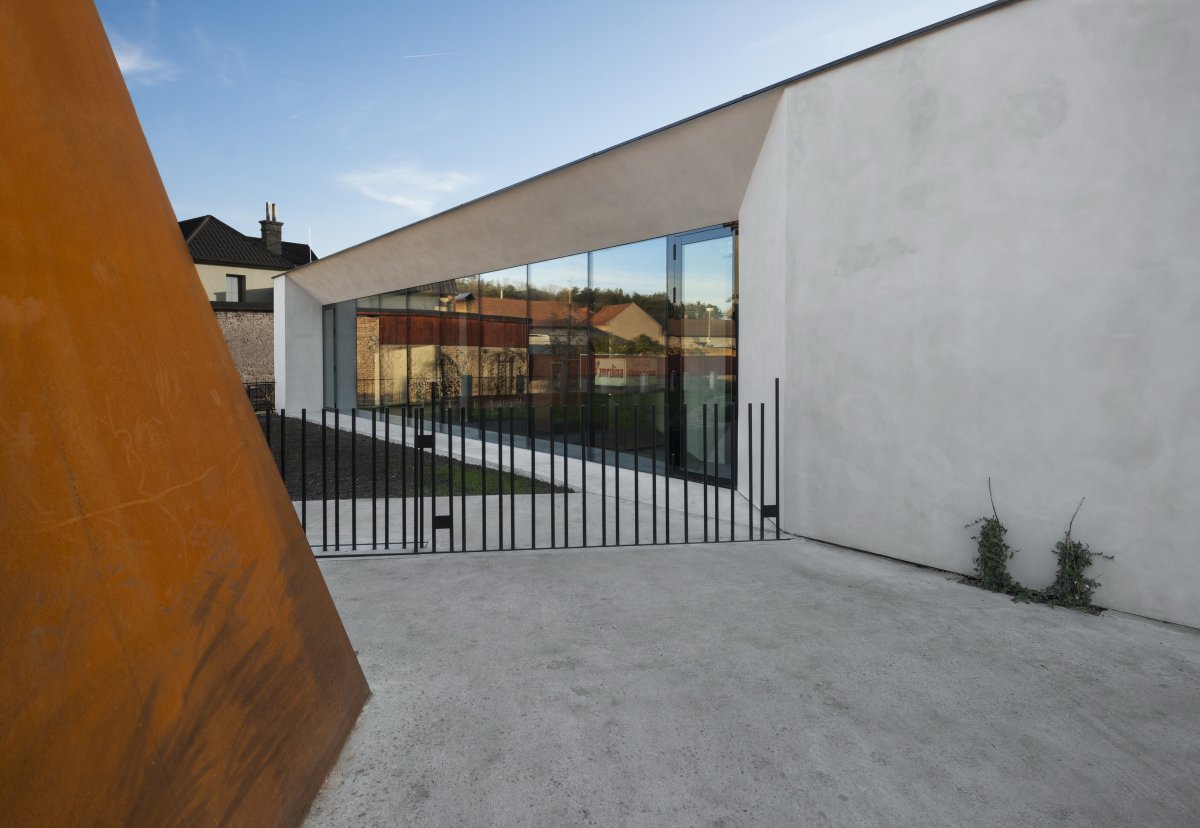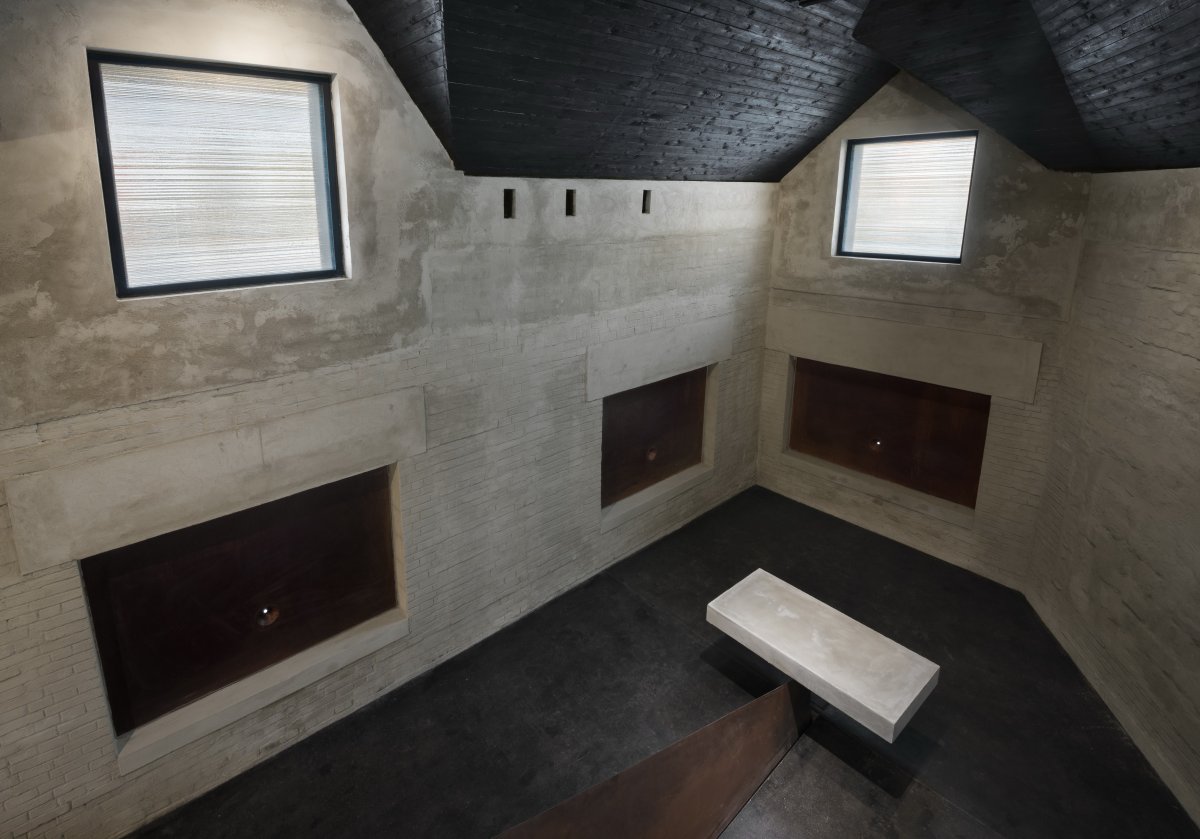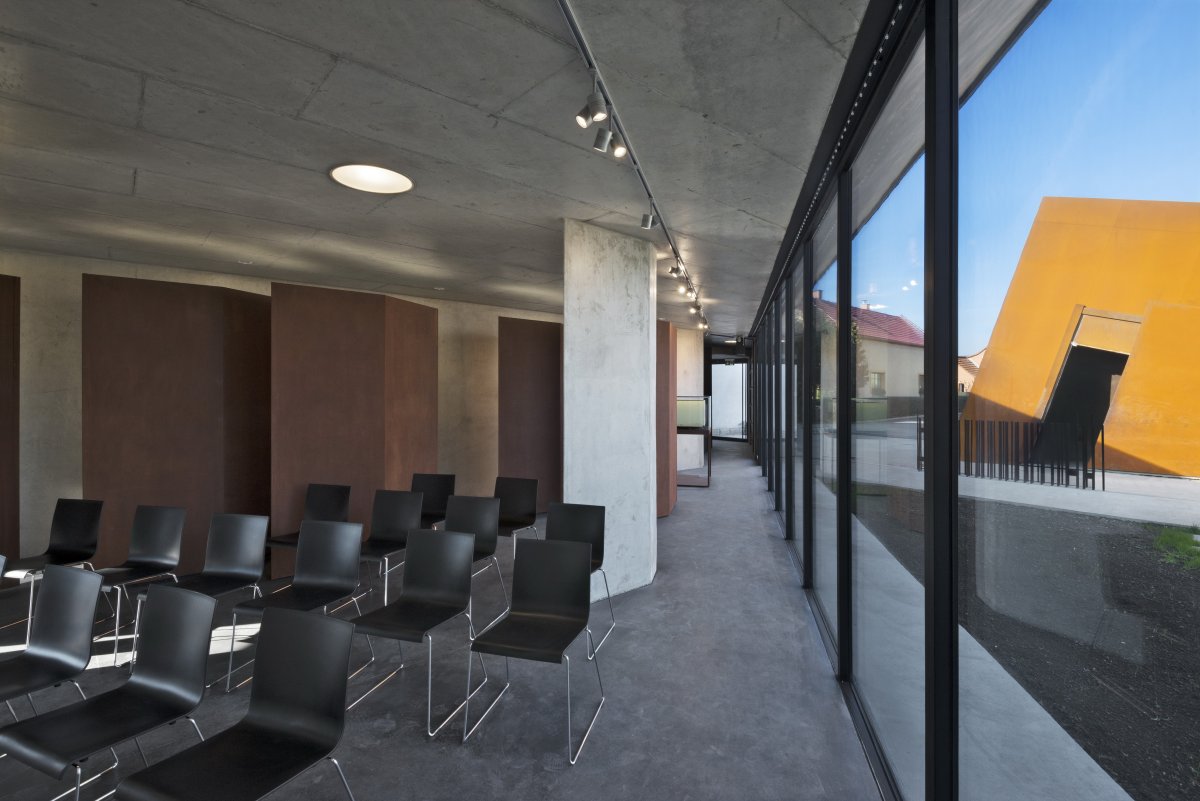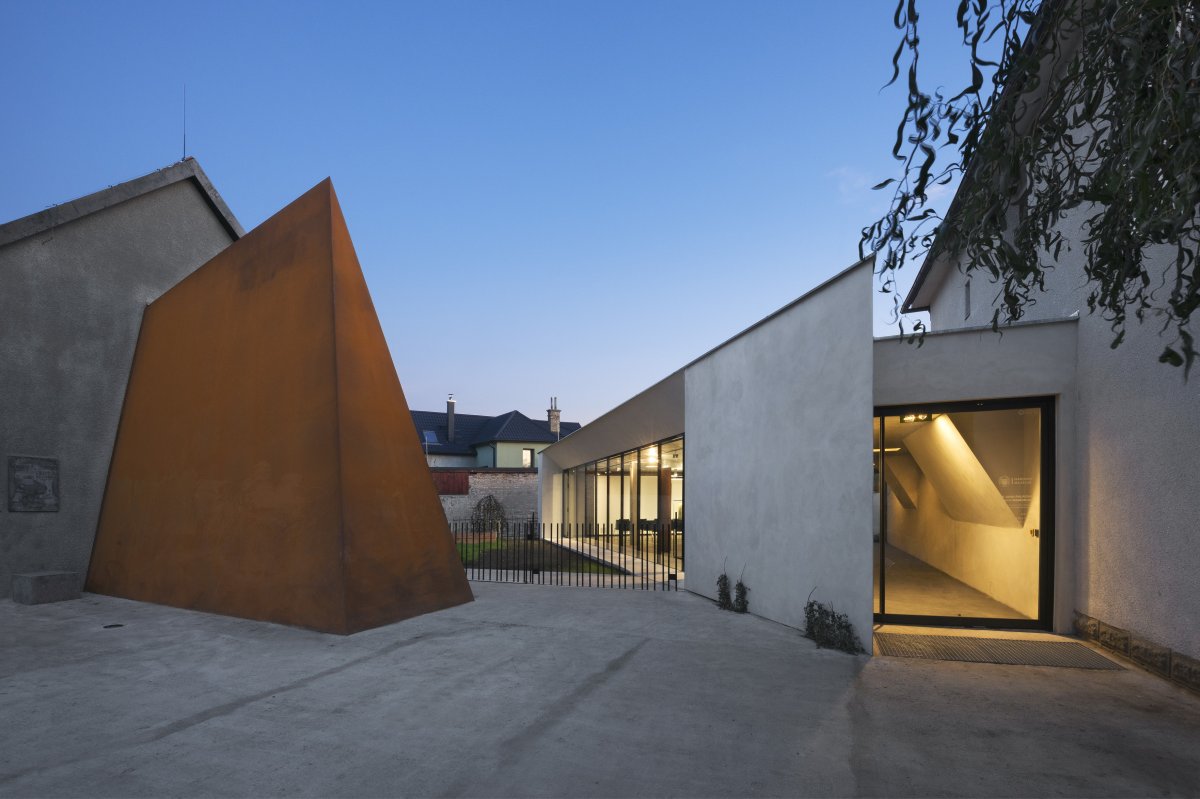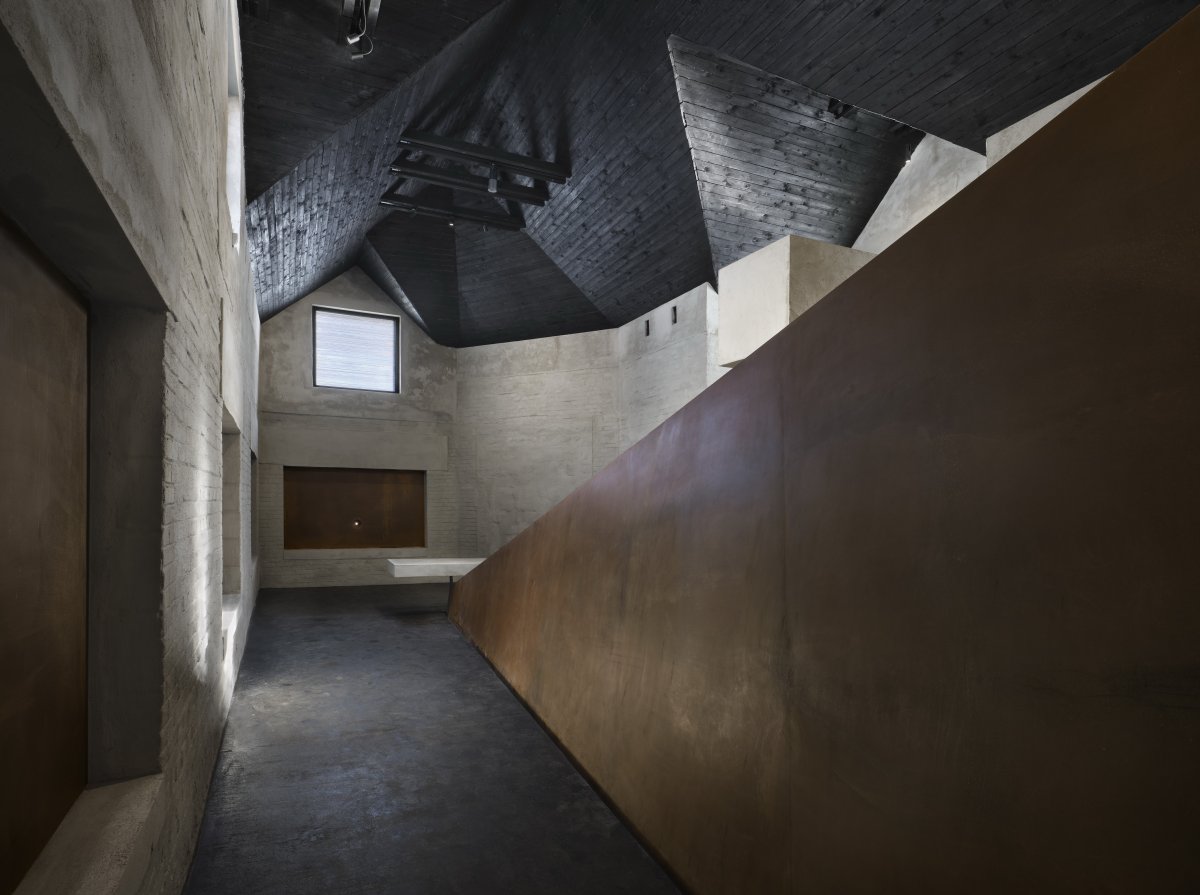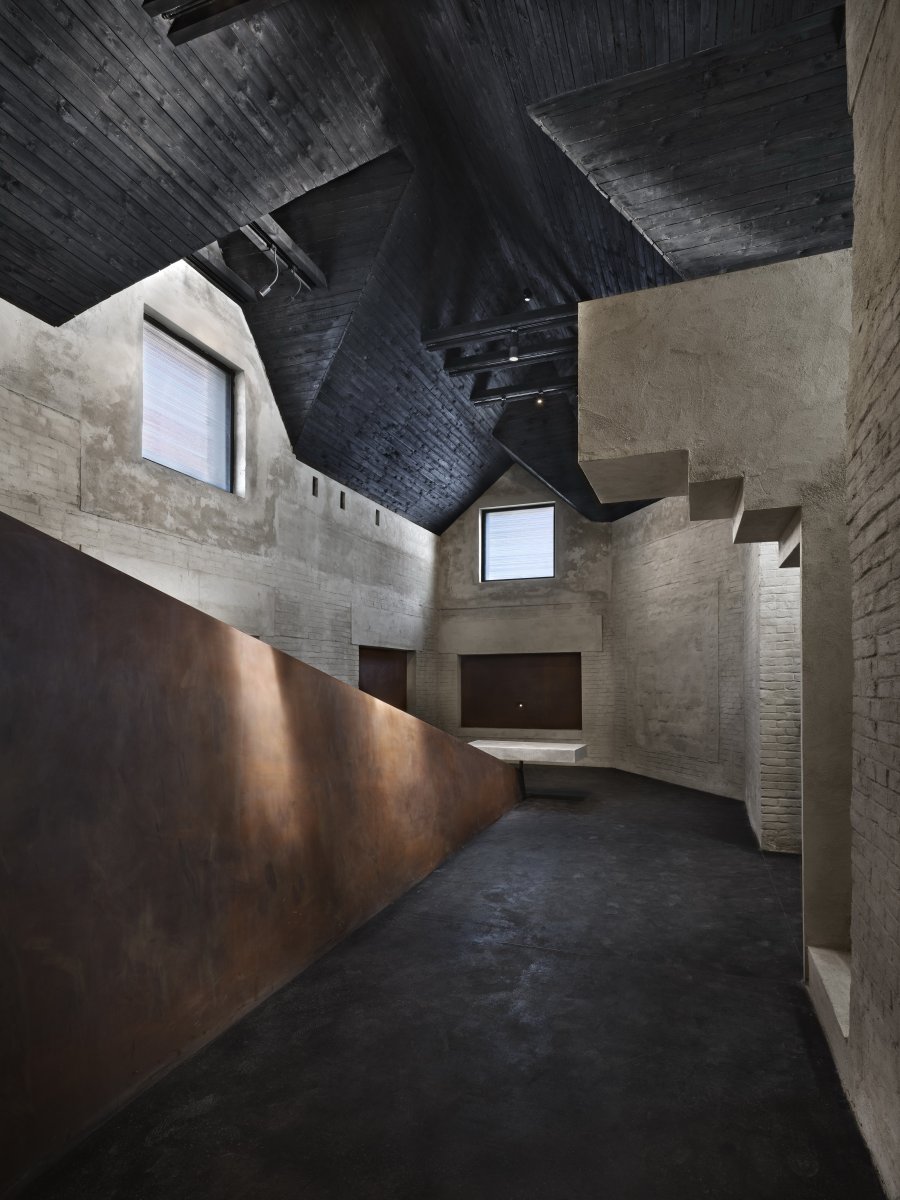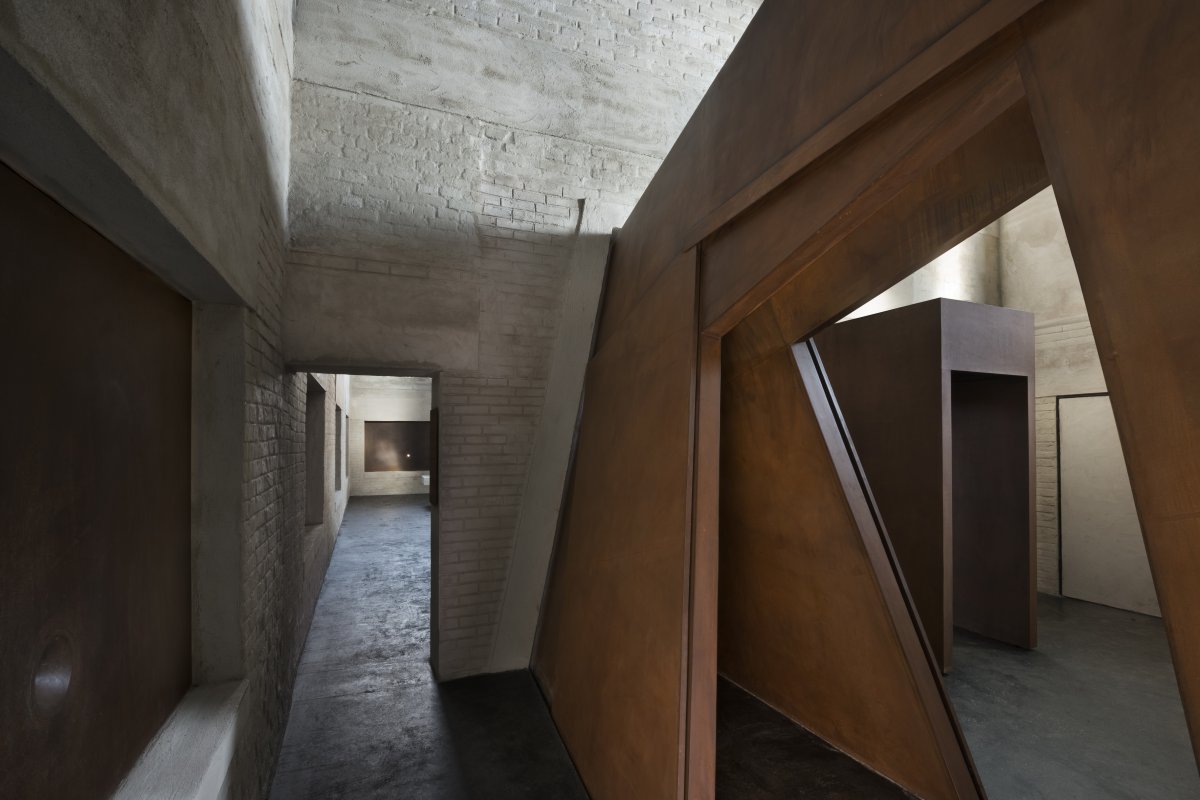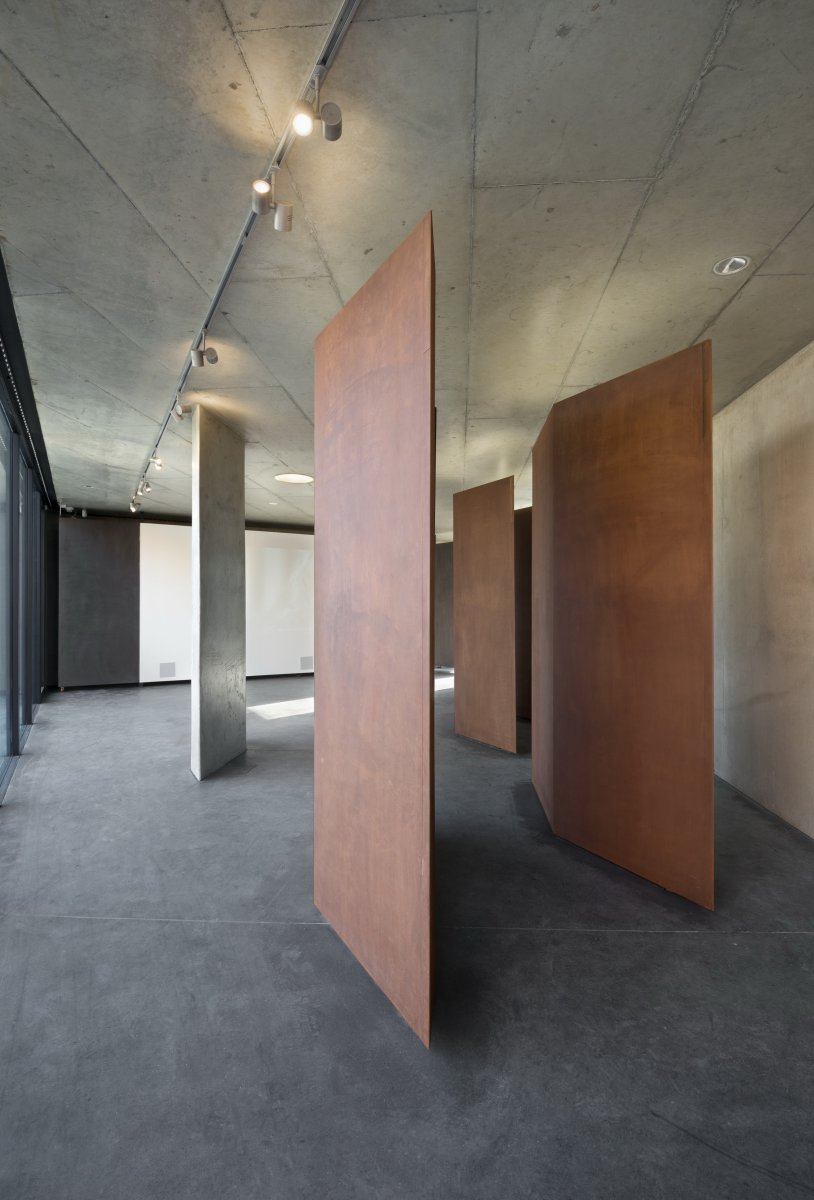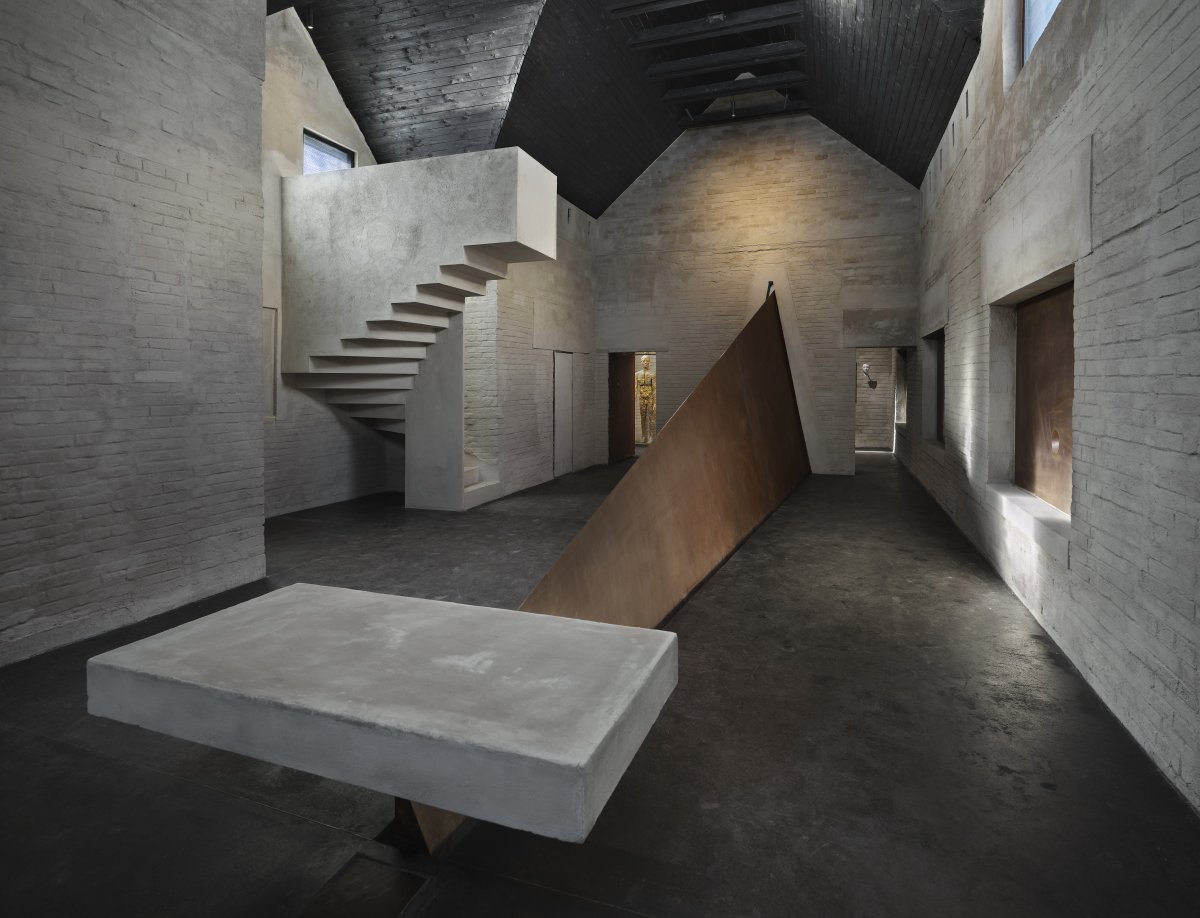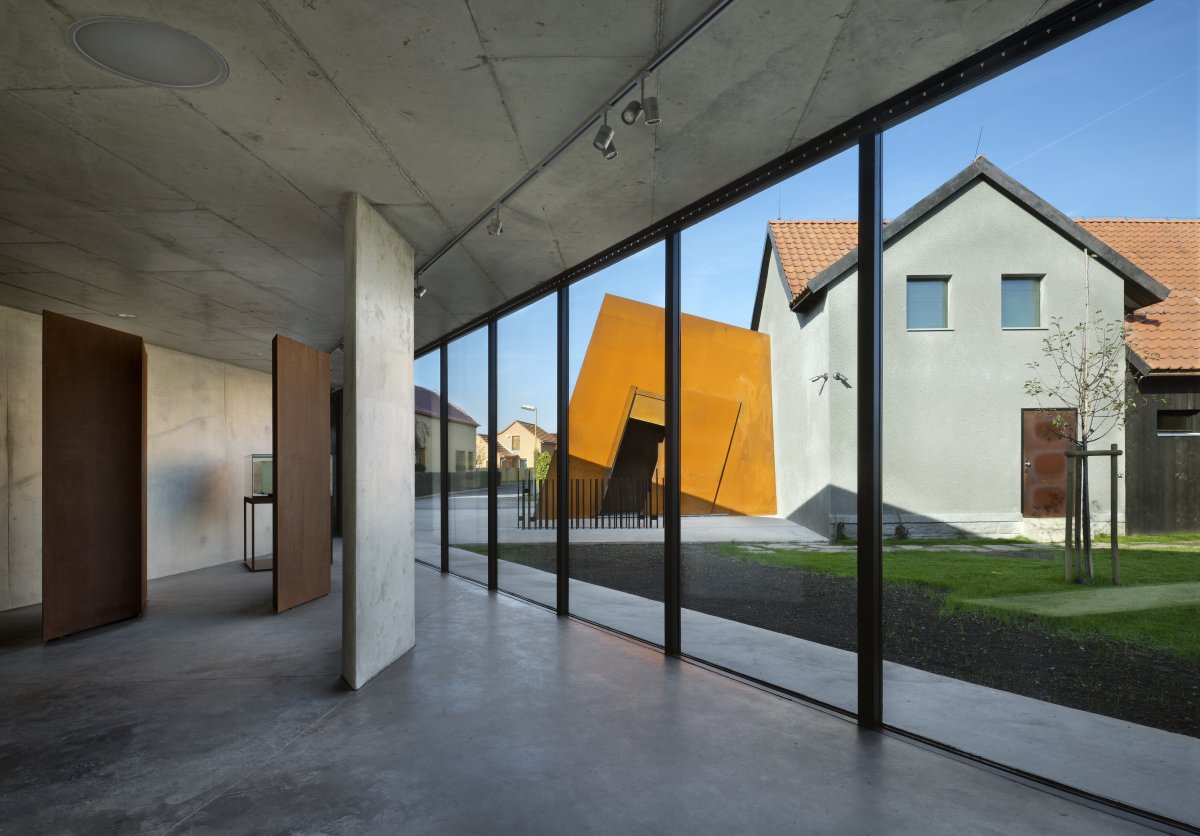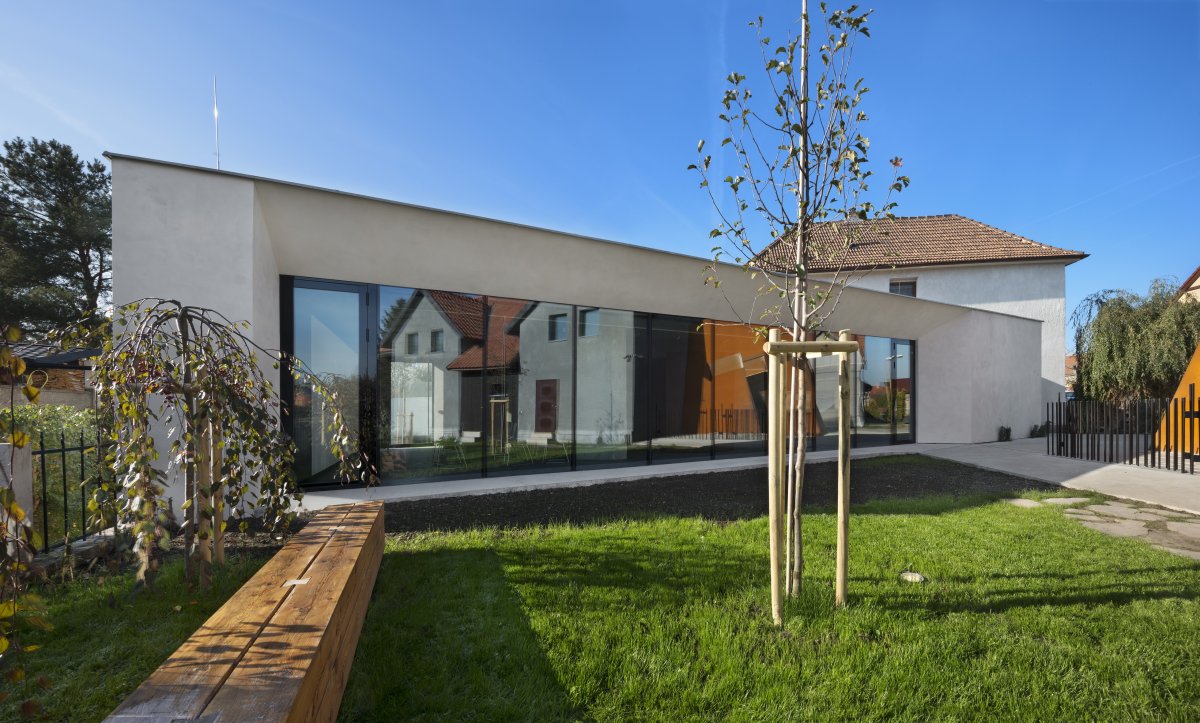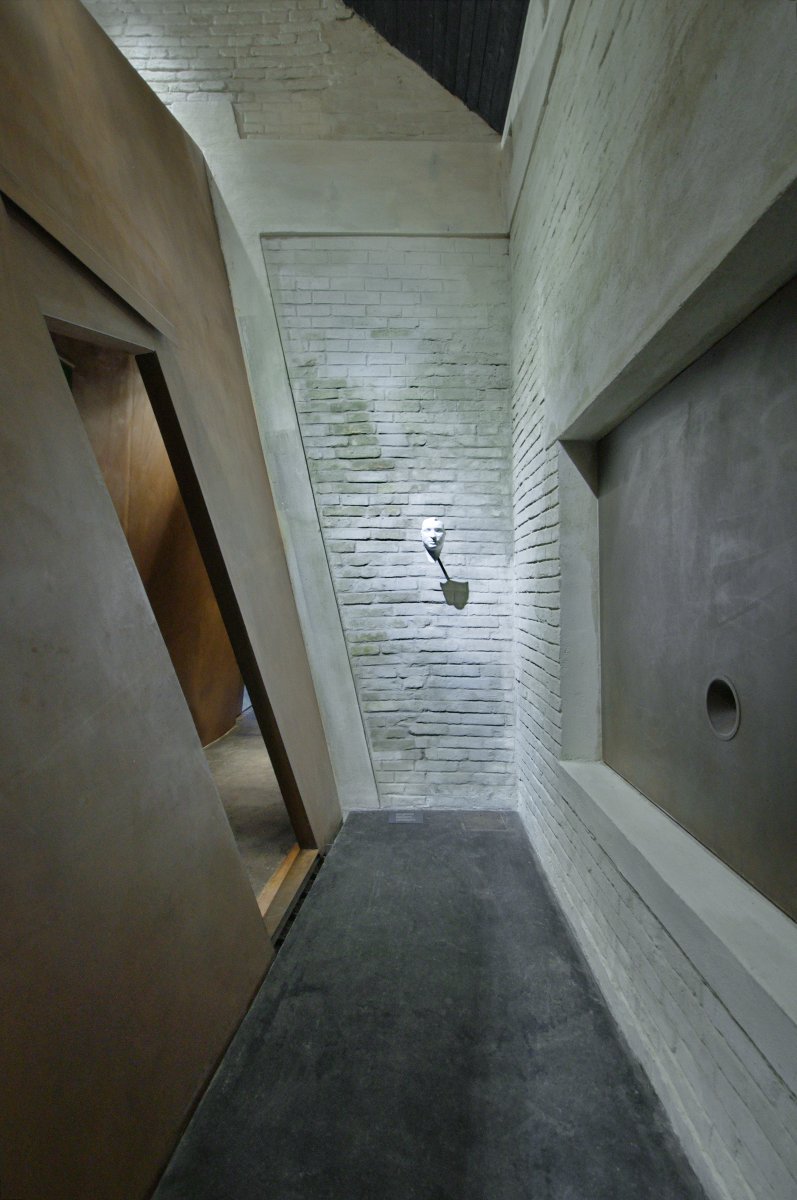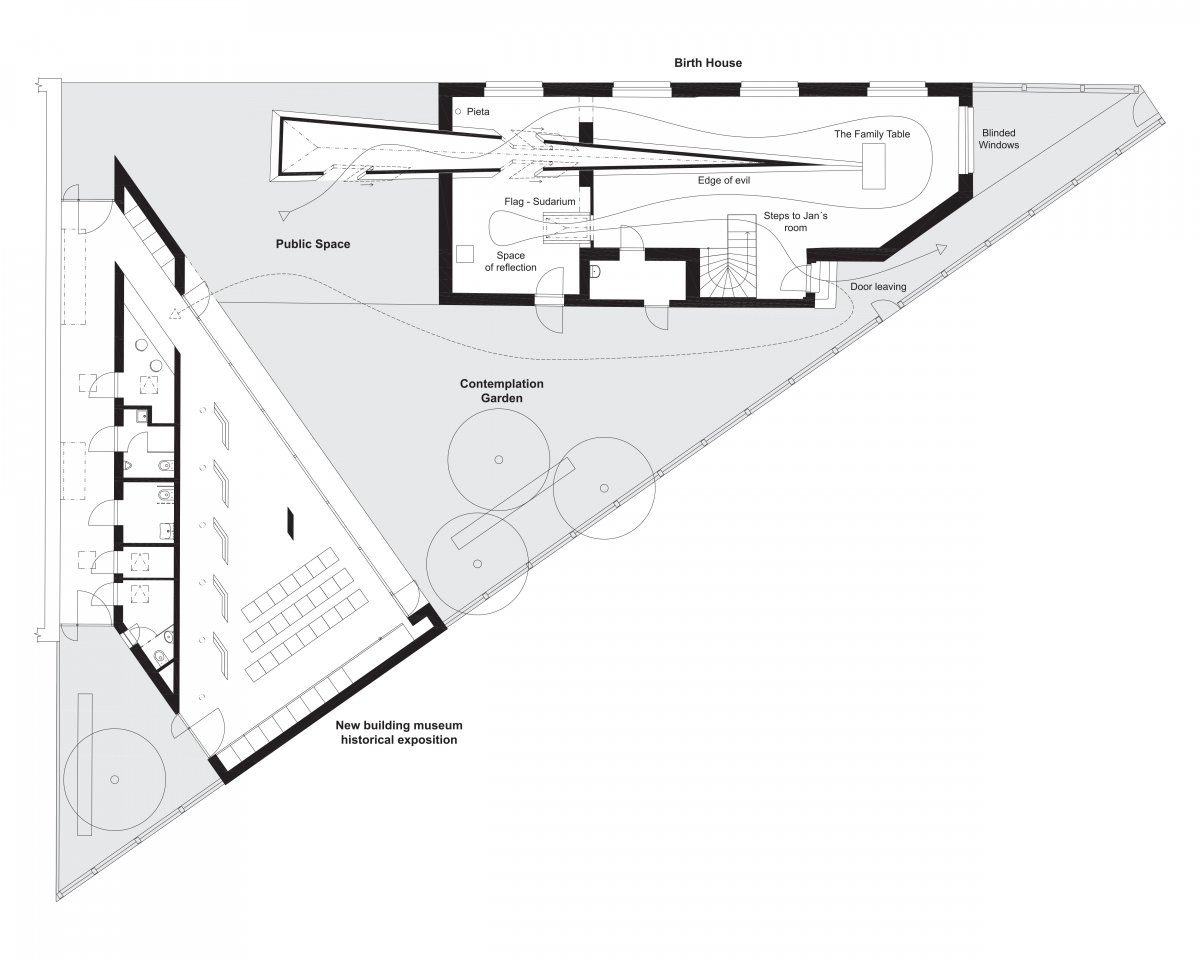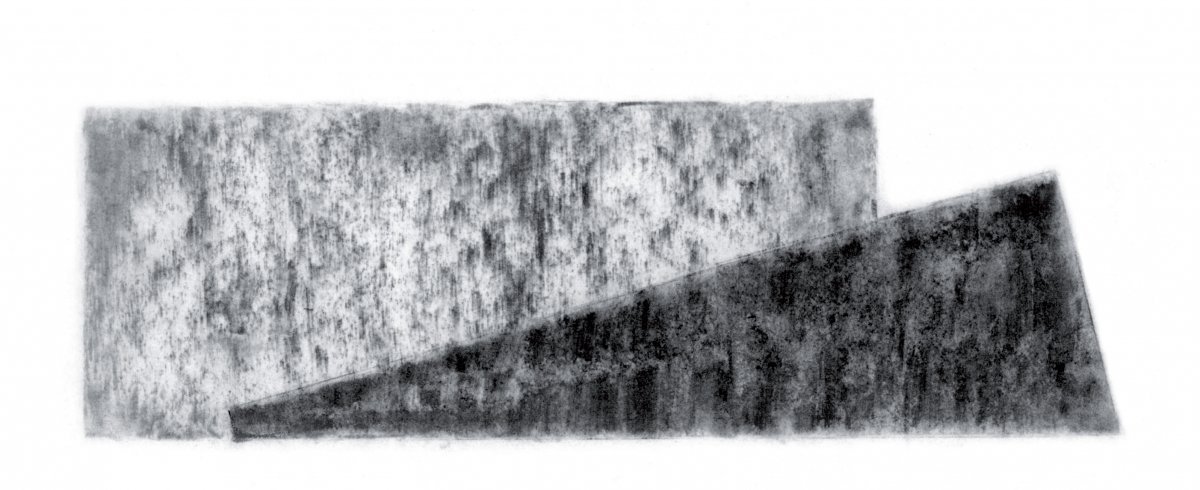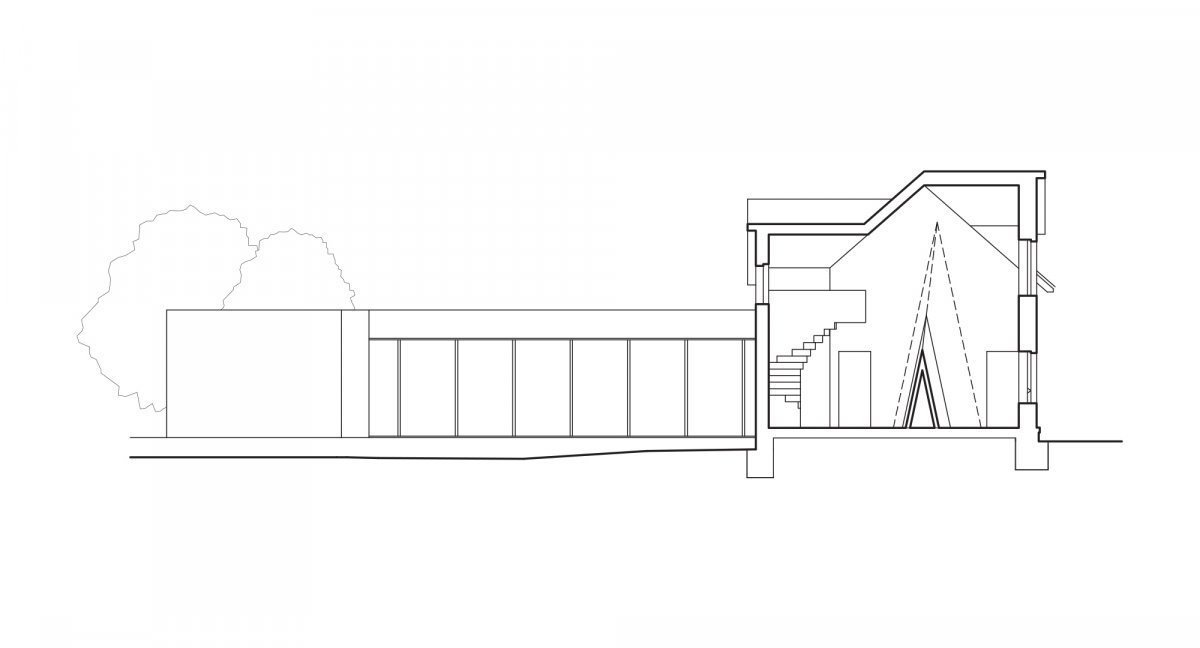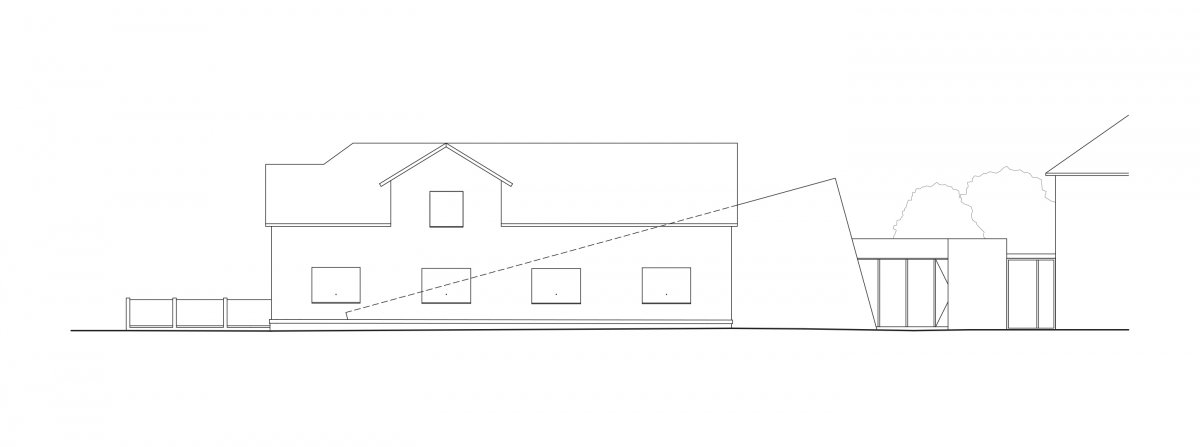Jan Palach Memorial, Všetaty, CZ
The memorial is located in Všetaty and consists of the transformed object of Jan Palach’s birthplace, a new pavilion of a historical exhibition and a contemplation garden. The project evloved from the design winning the 1st place in the public architectural competition. Since the original house was rebuilt before and no authentic elements of Jan's life have been preserved, the form of the memorial is abstract and symbolic. The monument symbolises the situation when the sharp edge of Evil slices into the life of a land, a family, an individual from the outside, and what challenge it provokes. It emphasises the significance of the act lying within the reception of history’s summonses to the individual, and thus elevates the validity of Palach’s death to a universal level, for the present as much as the past. It encourages us to listen to the challenges of today, and our personal reactions to them. The visitor passes through symbols that are embedded in the architectural and artistic layers. The edge of Evil cut through the house from outside, disrupting society, home, family, the inner world of man. But at the same time, it can be stopped by the value of the home and self-sacrifice. The table that stoped the edge of Evil is a tribute to the family and the mother. The house is emptied by the edge. Blind windows are the interface between a personal stance and the response of society. The small peepholes act as observation spheres from the outside and the hope of the beam of light from the inside. The torso of the stairs leads to the nonexistent room of Jan. The door he left on the day of self-sacrifice is now, and forever, only a door of leaving. We pass by under the flag, just as Jan was laying under it at the hospital. The Reflection Room is a space for an artistic response to the challenge of contemporary artists, in the form of varied exhibits of one work. The character of the memorial, where the bearer of the message is the space itself, is an example of the communication ability of architecture.
